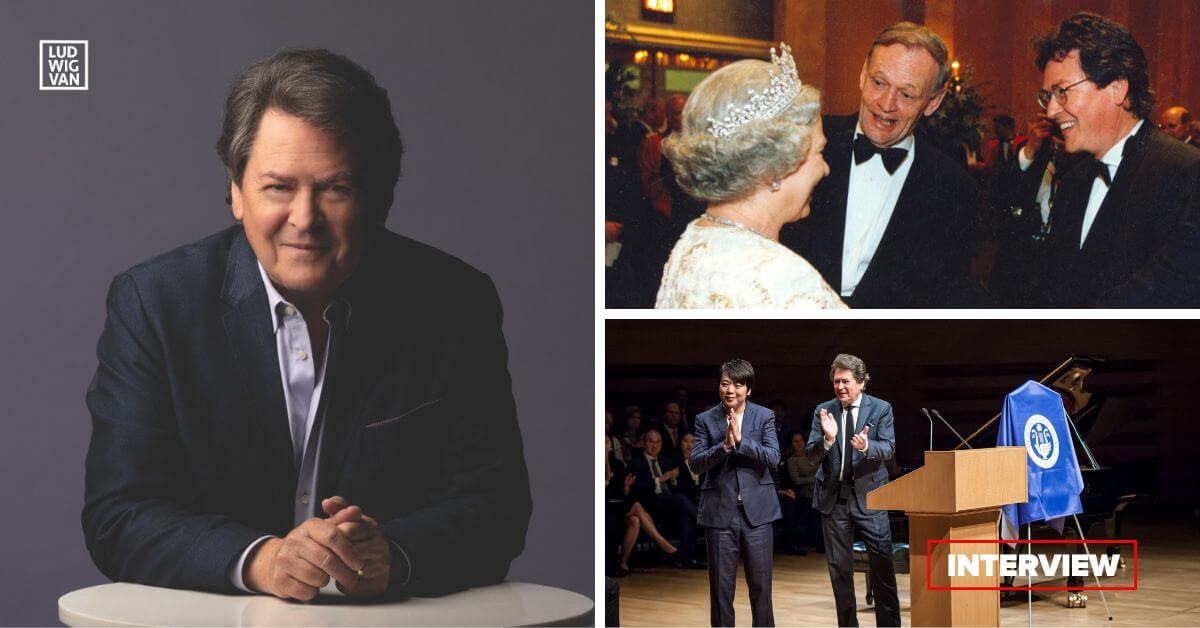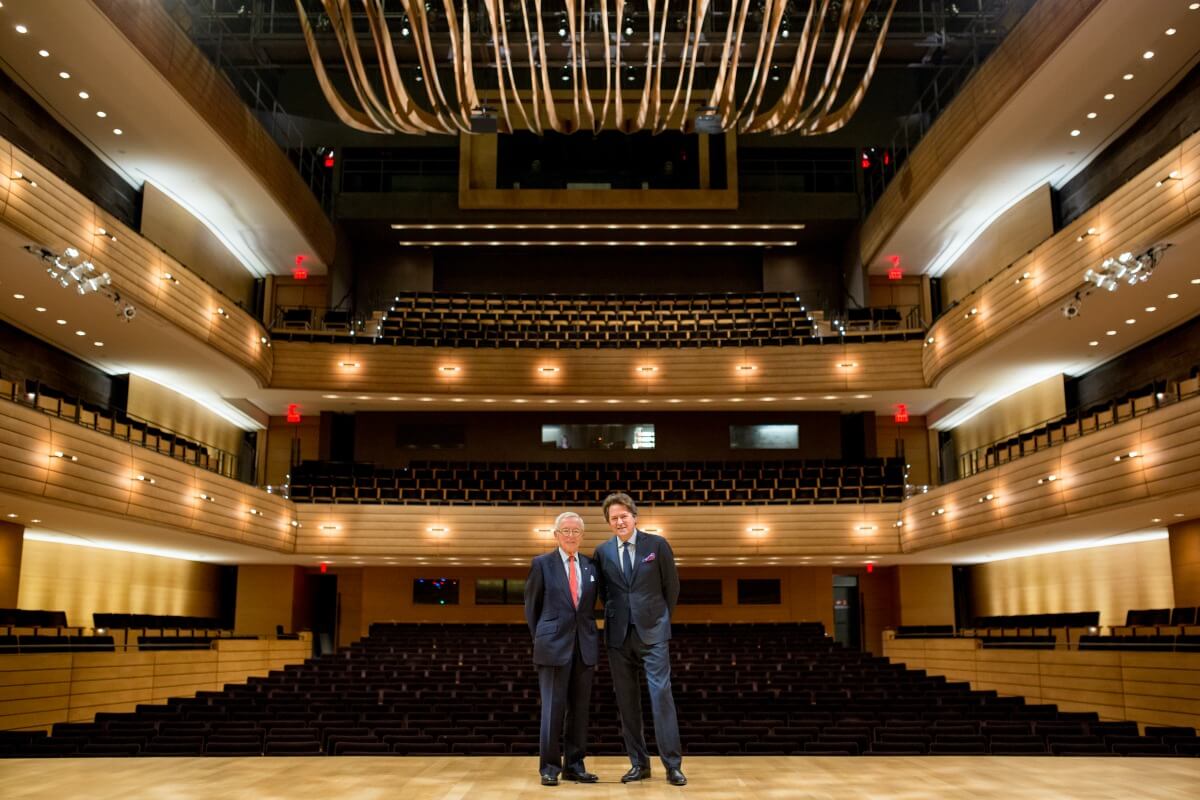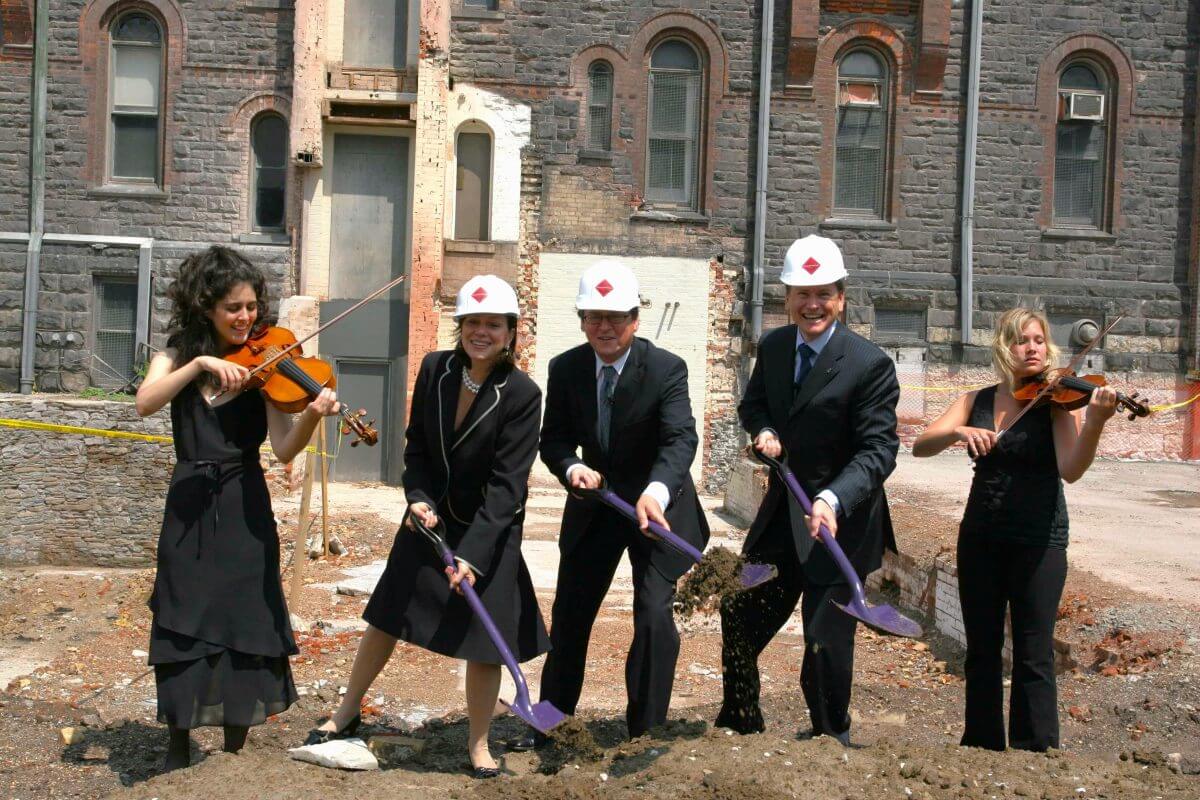[ad_1]

On the finish of August 2024, Dr. Peter Simon will step down from his position as President and CEO of the Royal Conservatory of Music. Throughout his tenure, the establishment has develop into acknowledged as a number one academic establishment, in addition to dwelling to a world class live performance corridor.
He’ll get replaced within the position by Alexander Brose, because the RCM seems to be to develop its attain past Canada in its subsequent section of evolution.
We spoke to Dr. Simon about his time main the establishment.
Dr. Peter Simon
Simon was born in 1949 in northeastern Hungary, in a small village the place his father labored as an engineer. They moved to Budapest, however in 1956, fled Hungary altogether earlier than Simon’s father might be arrested for organizing strikes to protest the Soviet invasion. They made it to Canada in 1957.
Naturally, Simon’s publicity to music didn’t start as an administrator. He studied the piano with Boris Berlin on the RCM he would later head. He continued piano research at The Juilliard College in New York, after which on the College of Michigan. There, learning with Leon Fleisher, he earned his PhD.
In 1986, he was the director of educational research on the Royal Conservatory, the place he introduced Fleisher again to Toronto to show and carry out.
It was primarily on a whim that he utilized for the job of President of the Manhattan College of Music in 1989. To his shock, and with zero administration expertise, he received the appointment. His tenure would final two years. In 1991, nevertheless, the job was open on the RCM again in Toronto.
The Royal Conservatory of Music
To grasp what Simon was coming dwelling to, it’s essential to delve into the RCM’s historical past.
The Royal Conservatory of Music was based in 1886 by Edward Fisher on the higher flooring of his music retailer at Yonge and Dundas. At the moment, it was linked to the College of Trinity Faculty. That modified to an affiliation with the College of Toronto in 1896. For slightly below a century, it grew to ascertain a nationwide community of examination centre, with annual performances and a Canada-wide profile as an academic establishment.
It developed right into a centre for each pupil {and professional} coaching. The Canadian Opera Firm grew from inside its opera division, and it produced a technology of distinguished musicians and lecturers, together with Glenn Gould, Mario Bernardi, Teresa Stratas, and others.
However, Simon returned to a company poised organizationally for the long run, but in addition coping with monetary shortfalls and different assorted issues.
From 1963 till 1991, the RCM has been ruled solely by the College of Toronto, which squeezed it out of its authentic dwelling. The Conservatory landed at its present dwelling on Bloor Road, however misplaced most of its live performance and recital halls, together with the library in its entirety, and three pipe organs within the course of. With out sufficient funding, the establishment entered a interval of decline.
In 1991, the RCM turned impartial from the College of Toronto via an act of the Ontario Legislature. It was a reasonably tumultuous time, you can say.
“It was fairly emotional for everyone,” Simon says. “What had occurred was unlucky.” Nonetheless, there was potential, regardless of the challenges. “It was what it was.”
“Cooler heads and wiser heads prevailed,” he says of the transfer to institutional independence. “Folks realized that the Conservatory didn’t match throughout the college, and I commend the college for recognizing that,” he says. “I believe it was factor for each events.”
Three many years plus later, in fact, each establishments are thriving as high notch music faculties.

Again To Toronto
What plans did he have on leaving Manhattan some 33 years in the past?
Total, naturally, was his want to “restore it as one of many biggest faculties on the planet”, as he describes it.
“In all probability, three bigger gadgets that I assumed might be executed. One, previous to me going to Manhattan, I had began an expert coaching packages as an initiative to get the conservatory again to skilled coaching, which had been a part of its illustrious historical past,” he says. “One, was to construct on that.”
He likens it to a mannequin based mostly on the instance of the Curtis Institute, which includes a set of philosophical values. He wished to develop an actual neighborhood the place college students that have been supported, mentored, and guided.
“Every pupil would have a person identification,” he explains. “Our job was to take them from level A to level B.” The main target is all the time on the person and their inventive voice.
“To do this would contain a sure sort of teacher,” he elaborates. The sort of establishment he envisaged would additionally incorporate extra time for every pupil, particular amenities to accommodate studying and development, and a welcoming setting.
“Canada had an incredible efficiency college on the RCM,” he says. “However all that was misplaced.” It was the best second to rebuild that legacy. “I assumed Canada wanted an incredible coaching establishment.” Canadian college students may keep within the nation to proceed superior coaching, and a excessive calibre establishment would additionally entice international college students.
A Live performance Corridor
“The constructing was clearly an enormous, huge problem,” Simon notes. “There was no situation that you can construct an incredible establishment because it existed.”
As soon as it had regained its standing as an impartial group, the RCM was in a position to reclaim the constructing on Bloor the place it’s at the moment housed (previously additionally dwelling to McMaster College, amongst different issues).
“It wanted a live performance corridor.”
Building work started on what was known as McMaster Corridor (now Ihnatowycz Corridor) in 1991, ultimately creating into the Telus Centre. The Mazzoleni Live performance Corridor was added in 1997. The entrance entrance was opened in 2002.
“I felt Toronto wanted an incredible live performance corridor with very good acoustics, and I didn’t suppose we had one,” Simon says. “The constructing and the live performance corridor collectively have been an merchandise. I felt that the efficiency facet was a should.”
Koerner Corridor, constructed at a value of $110 million, would comply with, opening in 2009 on what would have been Glenn Gould’s 77th birthday. It was designed by Marianne McKenna of the architectural agency Kuwarabara Payne McKenna Blumberg, already recognized for his or her work on the Nationwide Ballet College and different cultural establishments.
Efficiency linked the college with town and its folks, in addition to creating and fostering connections between its college students and worldwide artists who arrive to carry out, and likewise give grasp courses and mentor. “You want that sort of setting,” Simon explains.
“That was the second huge factor on the checklist.”
The third huge problem on his thoughts went past the confines of the RCM or Toronto to think about what he calls “the digital elimination of arts packages” at public faculties throughout the nation. The infrastructure of music that made it a part of folks’s on a regular basis lives was being eroded. “I assumed we have been headed for difficulties there.”
It led to his dedication to strengthen the system of impartial music faculties and instruction that exists throughout Canada, and to hopefully to provoke its growth.
“[It] stays for me, the most important disaster for schooling in my lifetime.”

Peter Simon’s Legacy
Amongst his different accomplishments, Simon reorganized the RCM’s actions in interrelated items, together with the neighborhood {and professional} faculties, the examination centre, and others. Enrolment, revenues, endowments, scholarships — no matter metric you employ, it has elevated dramatically over the course of his tenure.
At this time, the RCM’s packages and academic providers attain a few half one million folks annually.
By the point he leaves the place on the finish of August, his tenure can have lasted 33 years. It has been marked by growth and consolidation. That has included plenty of initiatives, corresponding to:
- Creating the Studying By The Arts (LTTA) in 1994, which places music again into public schooling, and has benefited greater than 300,000 college students at 300 faculties;
- Launching The Glenn Gould College (GGS), an internationally acknowledged college, in 1997;
- Creating the RCM Licensed Instructor Program;
- The Digital Studying division was launched in 2014;
- The Taylor Academy restructured and renamed as The Phil and Eli Taylor Efficiency Academy for Younger Artists in 2013, with a formidable checklist of grads that features pianists Tony Yike Yang, Jan Lisiecki and Stewart Goodyear, violinists Blake Pouliot and Sarah McElravy, and mezzo-soprano Ema Nikolovska amongst others;
- The founding of the ARC Ensemble, made up of RCM instructors, in 2003;
- The institution of The Marilyn Thomson Early Childhood Schooling Centre;
- Launched the Artist in Residence program with pianist Stewart Goodyear;
- Renamed of the RCM’s neighborhood college, now the Oscar Peterson College of Music, and launched its tuition-free schooling program.
On January 1, 2024, Dr. Simon was introduced as one of many new appointees to the Order of Ontario for 2023.
The Significance of Music
What saved him going via the work he noticed wanted to be executed?
“I’m optimistic by nature,” Simon says. “I simply don’t suppose you is usually a chief and never be optimistic. When you surrender on the long run, you surrender on life. And, it’s not place to be,” he says. “You’re obliged to be optimistic, and to hunt options always.”
It’s an optimism married to a deep ardour for music.
“I’ve probably the most profound perception within the significance of music in peoples’ lives and in society. Music must be in schooling, and in everyone’s life.”
He mentions the significance of the sort of emotional consciousness that music schooling encourages as a by-product, and the power to foster connections and speak in confidence to different human beings. He calls opening up the creativeness “important”.
“All the pieces in life arises from a imaginative and prescient of the long run. You may have to have the ability to think about the long run. How else will we show that we’re alive besides via some inventive presentation?”
He believes it’s important to academic growth. “[There’s] a really delicate transformation that occurs in younger folks,” he says, “and music is important to their psyche. If that’s not developed, then what do you get?”
With out it, there’s a vacuum. “You’re not giving folks an ethical compass or an ethical vocabulary,” he says. “I imagine so deeply on this.”
It’s a perception that has endured greater than three many years within the trenches.
“For all these causes, it makes me very decided.”
Are you seeking to promote an occasion? Have a information tip? Have to know the perfect occasions occurring this weekend? Ship us a notice.
#LUDWIGVAN
Get the each day arts information straight to your inbox.
Join the Ludwig Van Toronto e-Blast! — native classical music and opera information straight to your inbox HERE.
[ad_2]




